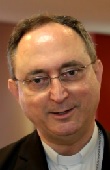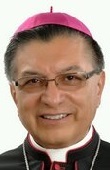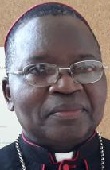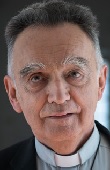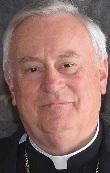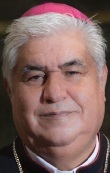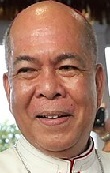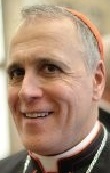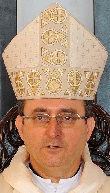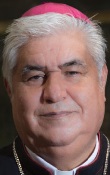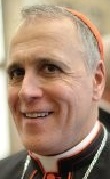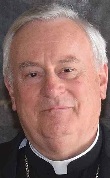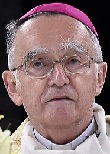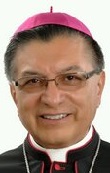|
Profiles of the Summit Attendees
We further examined the child protection guidelines and actions of the episcopal conferences in all eight countries. They range widely. Some conference websites, like those of France, Mexico, and the U.S., provide abundant information: how to report, the process for handling accusations, advice on prevention. It's a challenge for the visitor to discern which documents are marketing materials and which are canonically binding. At the other extreme are the episcopal conferences of Brazil and the Democratic Republic of the Congo. On their websites, the crisis is invisible, and no guidelines can be located. Click on the country name or photo of its conference president to scroll down to our discussion:
The leading bishop of the world’s largest Catholic country, Cardinal da Rocha gained global prominence last fall as a moderator of the Synod for Youth. Yet he has not weighed in publicly about the crisis of sexual abuse by clergy, either as conference president or Brasilia archbishop. He has released no documents, no names of accused priests, no tallies of accused priests, not even an apology to victims. Brazil's episcopal conference has not published an abuse policy This silence is maintained by the Brazilian episcopacy as a whole. The Conferência Nacional dos Bispos do Brasil (CNBB), led by da Rocha since 2015, still has published no policy for handling allegations of child sexual abuse by clergy. It has not even issued statements on the topic. The CNBB online archive contains only two official statements on the abuse issue: a 2010 promise to develop guidelines, and a 2012 announcement by then-CNBB president Cardinal Raymundo Damasceno Assis. He said that the conference had developed a policy, Guidelines and Procedures on Sexual Offenses Against Minors, that was awaiting approval by the Holy See. There has been no public update to the 2012 announcement, and as of January 2019, the draft Guidelines could not be located on the CNBB website. A Brazilian priest-psychologist who spoke at the Vatican symposium on clergy sex abuse in February 2012 hypothesized that his country’s inattention to abuse by clergy might be due to a greater cultural tolerance for child sexual abuse. Rev. Edênio Vale s.v.d, former president of Brazil’s Conference of Religious, also told the gathering that Brazil’s bishops “have no idea” how to deal with the problem, and thus have no “coherently thought out” response. Da Rocha's handling of a case in his diocese In 2016, without explanation to the public, da Rocha assigned an accused priest in his archdiocese to be in charge of a youth ministry. Father Wilson José Santos Pereira was accused in 2008 of sexually abusing an altar boy in Ceilândia, Brasilia over a three-year period, beginning in around 2004, when the boy was 14. The priest was investigated by law enforcement but not charged, due in part to a change in the law that lowered the victim’s actionable age from 17 to under 14. In 2016, Pereira was named spiritual director of O Encontro Pastoreio Jovem (EPJ), a youth-focused ministry that meets regularly at Pereira’s parish in Asa Sul, Brasília.The scope of the crisis is still hidden in Brazil In 2010, shocking revelations of a pedophile ring involving four priests in the diocese of Penedo triggered widespread media coverage and a parliamentary inquiry. But in the years following, as the crisis dominated headlines in Europe, the U.S., Australia and Chile, it vanished from public attention in Brazil. The factors that have driven disclosure in other countries – litigation that compels testimony by church officials and the production of secret documents, investigations of dioceses by prosecutors, government inquiries, aggressive media investigations – have been largely absent in Brazil.Countless accused priests remain unnamed Yet the Vatican has long been aware of abuse and cover-up in Brazil. In 2005, the Brazilian investigative magazine ISTOÉ reported that Pope Benedict recently had sent envoys to investigate sexual abuse. According to ISTOÉ, the Vatican investigators issued a report of their findings. It cited allegations of sexual abuse and sexual misconduct against 1,700 Brazilian clergy, and counted 200 clergy who had been sent for psychological treatment in the church’s clinics. The report was never published, and its existence has not been corroborated. According to ISTOÉ , it was “guarded as a confessional secret.” Shocking case coming to light: An accused bishop and ring of abusers in the Paraíba archdiocese More recently, in 2016, Pope Francis removed from office the archbishop of Paraíba. Aldo di Cillo Pagotto is accused of both perpetrating and enabling sexual abuse of children and vulnerable adults. The Pope has not commented on the allegations against the archbishop. But thanks to a recent court ruling, the gravity and details of Pagotto's wrongdoing are finally coming to light. In January 2019, a civil court ruled in favor of several victims of clergy sex abuse, ordering the Paraíba archdiocese to pay them 12 million Brazilian real, or US $3,229,740. The historic ruling made headlines, and more victims of Pagotto and Paraíba priests have come forward. Another case to watch: news broke in 2018 that the Vatican had sent envoys to investigate the current Rio Preto bishop, Tomé Ferreira da Silva. He is accused of sexual harassment and of harboring abusive priests.
No bishop in Mexico speaks more forcefully about stopping sexual abuse by priests than Archbishop Rogelio Cabrera, the recently elected president of the Conferencia del Episcopado Mexicano (CEM). Echoing Pope Francis, he has vowed ‘never again’ to abuse and cover-up. He has pledged to be transparent, and he recently called the clergy sex abuse phenomenon ‘a bottomless well.’ In his home archdiocese of Monterrey, he has implemented an abuse-response protocol and set up a safeguarding commission. His vicar general recently spoke along with the leader of SNAP Mexico at the first National Forum for Children’s Rights in the Face of Clergy Pedophilia. On February 10, 2019, shortly before traveling to the papal abuse summit, Cabrera announced that 152 priests in Mexico had been removed from ministry over the last nine years for alleged child sexual abuse. He didn’t name the accused priests, provide details about the alleged abuses, or say whether the priests had been reported to civil authorities. The archbishop’s omission of names was addressed in a follow-up statement by the Mexican Episcopal Conference (CEM). Promising that “the effort to obtain the full diagnosis of cases of child sexual abuse in Mexico will continue,” the CEM reminded “citizens and authorities” that they are obligated to keep information about both victims and perpetrators secret. Disclosing this information not only breaks the law, the statement says, but “re-victimizes those affected.” At the February 2019 summit, Cabrera intends to ask the Pope for unusual new faculties for the Mexican bishops’ conference (CEM). The CEM recently approved a ‘National Team for the Protection of Minors’ that would have regulatory power over dioceses. It essentially would act as a ‘second-instance’ review board to deal with cases of sexual abuse when the bishop does not have the ability to resolve them. Cabrera said this is necessary because in some Mexican dioceses, the church still has ‘no training, no expertise or even awareness’ of the gravity of sexual abuse by clergy. The vigor of Cabrera's statements and proposals is not reflected in his response to specific abuse cases. He claims to have handled only one abusive cleric in Monterrey, and he has kept even that name secret. He narrowly defines his scope of responsibility, declaring no obligation to act in regard to an abusive religious brother in his archdiocese, and refusing to chastise a complicit bishop in a suffragan diocese. The archbishop's minimalist approach is made possible by Mexico’s victim-hostile laws. The Organization for Economic Cooperation and Development (OECD) ranks Mexico first worldwide "in terms of sexual abuse, physical violence and homicide against children under 14." Federal law in Mexico requires clergy to report abuse only under limited circumstances, and Cabrera’s archdiocese is in Nuevo León, one of 25 of Mexico's 32 states that do not classify child sexual abuse as a serious crime, according to a senator of the Mexican Congress. Astonishingly, only four Mexican priests have been convicted of child sexual abuse nationwide, the first in 2017 and three others in 2018. Cabrera says he's dealt with only one abusive priest in six years In December 2018, Cabrera said that in his six years as Monterrey archbishop, he had encountered only one case of an abusive priest, and the priest’s offense was harassing a minor via text messages: "I've been here six years, I don't have a full history; I've looked at the archives, it's the only case and it was because of messages over the phone. The priest was punished," said Cabrera. He would not name the priest. Cabrera’s claim is implausible. With four to five million Catholics, Monterrey is among the largest of Mexico’s 92 dioceses. It has roughly the same Catholic population as the USA’s Los Angeles archdiocese, which posts a recently updated list of 296 accused clergy. It’s also not clear how Cabrera’s claim of one removed priest squares with recent statements by his top aides that eight archdiocesan personnel, lay and clergy, have been reported to civil authorities for child sexual abuse since 2012, and that three people have been removed from their positions since 2015 because of alleged crimes against minors. Cabrera: Abusive cleric living in Monterrey not his responsibility When news broke in early December 2018 that a LaSalle religious brother was accused of sexually assaulting six teen girls, Archbishop Cabrera praised the victims for coming forward but said he ‘did not have to do anything’ about the cleric, even though the cleric was living in the Monterrey archdiocese and two of the victims were from Monterrey. The cleric was not his responsibility, Cabrera said, because the criminal charge had been filed in another state, and the canonical case was the obligation of LaSalle superiors. Brother Alejandro Gaxiola Parra had been sent to Monterrey by LaSalle religious officials after a young woman informed them that Gaxiola had sexually assaulted her in the state of Durango in 2016, when she was an 18-year-old volunteer with a LaSalle mission program. In October 2018, she filed a complaint of attempted rape with Durango prosecutors. In December, she and five other alleged Gaxiola victims went public with their stories. Following a flood of news stories, Cabrera amended his position. He announced that in 2019, he will require each religious order to notify the archdiocese of every member working in the archdiocese, and to stipulate formally whether the cleric faces any civil complaint. It should be noted that the CEM Guidelines, promulgated in 2016, indicate that it is the bishop’s responsibility to find out if a religious cleric has been accused before accepting the cleric into his diocese. [See Guidelines, provision 40.] Victim: Cabrera urged me not to report complicit bishop Despite a victim’s plea, archbishop Cabrera issued no public rebuke of a suffragan bishop, Alonso Gerardo Garza Treviño, who in 2017 allegedly obstructed justice and failed to report child sexual abuse by a priest. Garza is bishop of Piedras Negras, a suffragan diocese of Monterrey. Garza had assured the victim that he would suspend his abuser, Father Juan Manuel Riojas Martínez, who had admitted to the crime. Instead, Garza re-located and re-assigned Riojas, impeding the start of a criminal investigation by four months. Riojas, known as Father Meño, eventually was sentenced in October 2018 to 15 years in prison. According to the victim, Archbishop Cabrera tried to dissuade him from filing a complaint of complicity against Garza. “He [Cabrera] told me not to lose sight of my objective, that the one who had abused me was father Meño, and not to continue accusing bishop Garza Treviño of cover up,” said the victim. Cabrera's protocol: Reporting is required only under certain conditions The Monterrey archdiocesan protocol enacted by Cabrera in November 2018 distinguishes between required and voluntary reporting to civil authorities. A religious association must notify the “competent authorities” of a possible crime only if it has been “committed on the occasion of our worship or in our facilities” (“cometido en ocasión de nuestro culto o en nuestras instalaciones”). If the possible crime happens away from church property or not during an occasion of worship, “it is not an obligation” for the church to report it. However, the church will voluntarily do so, because of its ‘commitment to justice,’ although care will be taken ‘not to defame people.’
Separately, Cabrera has emphasized that the reporting obligation lies with parents: the “parents should report the situation to the competent authority, which is to say, the Office of the Public Prosecutor.” Bishops' official abuse policy: no zero tolerance, no mandated reporting, no mandatory reparations paid by the church In November 2018, one week after Cabrera’s appointment as President, the Mexican Episcopal Conference (CEM) announced the formation of a National Group for the Protection of Minors. It consists of bishops, priests, and laypeople, tasked with keeping the church's abuse “policies, protocols, and manuals” up to date. The CEM currently posts its Guidelines for the Procedure to Follow in Cases of Sexual Abuse of Minors by Clergy (“Líneas Guía del Procedimiento a Seguir en Casos de Abuso Sexual de Menores por Parte del Clérigo”). The guidelines are dated October 2016. Reflecting universal canon law, the guidelines do not require that a guilty priest be permanently removed from ministry. An offender’s return to ministry or transfer to another diocese, order or religious congregation is prohibited only if, in the bishop’s judgment, “the guilty cleric represents a danger to children or adolescents or there is a risk of scandal for the community.” [See Guidelines, clause 26.] The Mexican church's understanding of its reporting obligation is stated in bald terms in Criteria of the Archdiocese of Mexico in relation to inappropriate behavior, mainly with minors, that could happen by clergy ("Criterios de la arquidiócesis de México en relación con comportamientos inadecuados, principalmente con menores, que pudieran suceder por parte de clérigos"). Posted in 2007, this abuse policy of the Archdiocese of Mexico (City), the world's largest diocese, appears to still be in effect. In regards to reporting to civil authorities, the policy states: "The Archdiocese [of Mexico] does not have the obligation to report a priest who is guilty of sex abuse. Legal proceedings are only initiated if the victim, or his or her representative, files a complaint.” [For the full text of the Criteria, see pages 250-270 of the archdiocese's January-June 2007 Gazette.] Nor do the guidelines mandate reporting to civil authorities. The provision states merely that “it always will be important to cooperate” with civil authorities and to comply with reporting laws provided that doing so is “without detriment” to the church’s own internal investigation. [See Guidelines, clause 42] In regards to compensating victims, “the Mexican State establishes that reparations to victims for damages is the primary responsibility of the guilty.” [See Guidelines, clause 20.] CEM vice-president: Abuse 'is not a problem of the church' In September 2018, Carlos Garfias Merlos, archbishop of Morelia, addressed the topic of clergy sex abuse. He said, “Abuse is not within the church, it is an issue of humanity. We see it within families, in schools. It is an issue of sexual education, and it is an issue where the church seeks to do its part and take measures for justice when ‘matters’ are committed. But it is not a problem of the church. It's not that the church has failed.” Two months later, Garfias was elected vice-president of the CEM. Notable recent cases These recent cases appear to be the only criminal convictions of abusive priests in Mexico:
Archbishop Romulo G. Valles leads a church that faces no challenge to be accountable for clerics who commit sexual crimes. The external mechanisms that have forced accountability by Catholic bishops elsewhere – litigation by victims, probes by prosecutors, governmental inquiries, and hard-hitting media investigations – have occurred little or not at all in the world’s third largest Catholic country. A measure of the Philippine church’s impunity: In a country with more than 80 million Catholics, not one priest has been criminally convicted of sexual abuse of children and vulnerable adults, according to Philippine bishop Buenaventura Famadico. With no legal or cultural pressure to disclose information or practice 'zero tolerance', Valles and his brother bishops still follow a lenient 2003 abuse policy that allows offenders to be returned to ministry and tolerates 'priest-fathers' until they sire a second child. Accused priests in active ministry in Philippine parishes
Cardinal Tagle: Zero tolerance, media exposure, and legal action aren’t the “Asian approach” Archbishop Valles: It’s time to revisit our existing guidelines for child protection Those “existing guidelines” have disappeared from the CBCP website. We saved them. The Guidelines allow second chances for guilty priests The “one-child quota system” for "priest-fathers" Bishops' 2016 document busts the “stereotype” of the “innocent child victim,” blames parents, celebrates forgiveness of perpetrators In January 2016, the CBCP issued the Pastoral Exhortation on the Pastoral Care and Protection of Minors. An amplification of the 2003 Guidelines, the document’s purpose was to address child sex abuse in Philippine society generally, and to assure civil authorities of the church’s cooperation in cases of offending clergy. ‘Pardon is a kind of healing of memory, the end of mourning. Delivered from the weight of debts, memory is freed for greater projects. Pardon gives memory a future…As the horizon of the sequence sanction-rehabilitation-pardon, pardon constitutes a permanent reminder that justice is the justice of human beings and that it must not set itself up as the final judgment.’ “We come full circle then when the indictment of the offender, the appropriate action against him, the atonement and the satisfaction lead to the healing both of a wounded child, a wounded church and a wounded offender!" [p. 5]
Elected president of the U.S. Conference of Catholic Bishops in 2016, Cardinal Daniel DiNardo spoke forcefully in August 2018 in response to the McCarrick revelations and shocking Pennsylvania grand jury report. The cardinal described the situation as a "moral catastrophe" and blamed it on "the failure of episcopal leadership."
U.S. bishops’ ‘zero tolerance’ norm is heavy on bishop's discretion and due process for accused 8. When even a single act of sexual abuse of a minor by a priest or deacon is admitted or is established after an appropriate process in accordance with canon law, the offending priest or deacon will be removed permanently from ecclesiastical ministry, not excluding dismissal from the clerical state, if the case so warrants.Unfortunately, the phrase that we have bolded – "after an appropriate process in accordance with canon law" – gives wiggle room to bishops, allowing them to keep sex offenders in active ministry for months or years. The process was described in the Manual for Canonical Processes for the Resolution of Complaints of Clerical Sexual Abuse of Minors, presented to U.S. bishops in 2003, by Charles Scicluna, then-Promoter of Justice for the CDF. U.S. Norms don’t mandate reporting to law enforcement
Cardinal Gualtiero Bassetti and the Conferenza Episcopale Italiana (CEI) recently began paying closer attention to clergy abuse in Italy, home to 50 million baptized Catholics and ranked the fifth “most Catholic” country in the world. Yet despite a flurry of statements and activity in late 2018 and early 2019, CEI has not been transparent. It has provided no numbers of victims or abusers, and it solicited no victim input to an updated abuse policy that will be kept secret until May 2019. Italian bishops still in office have transferred abusive priests to other dioceses, angering survivors and their families, who now demand action from their archdioceses and the Vatican. The abuse crisis -- as experienced in the U.S., Chile, and Ireland – has not fully erupted in Italy. But public activism and a scathing new U.N. report may spur Bassetti and the CEI to disclose more information and enact reforms. Italy’s bishops’ conference has special relationship with the Vatican CEI enjoys a special relationship with the Vatican, due to proximity, policy, and personalities. Italy is the only country in which the head of the episcopal conference is appointed by the Pope rather than elected by fellow bishops. Crux writes: “The president of the Italian bishops’ conference is probably the most powerful such figure in the world. This is due both to his direct appointment by the pope, and because of the vital role the Church still plays in public affairs in Italy.” Pope Francis selected Bassetti (one of three names suggested by CEI as part of a new process) to lead the conference in 2017. He is seen as “cut from the same cloth” as Francis, often speaking about the plight of workers and working to improve the Church’s social services in his archdiocese. Currently, there is some tension between CEI and Italy’s government, specifically over migrants and taxation. The new U.N. report, which calls on the Italian government to increase prosecution of abusive priests and to revisit two old treaties, could increase the friction. U.N. blasts Italy’s failure to stop child sexual abuse by Catholic clergy In February 2019, the U.N. Committee for the Rights of the Child released a critical report about Italy’s handling of clergy sex abuse cases. In its Concluding observations on the combined fifth and sixth periodic reports of Italy, the Committee cited its concern “about the numerous cases of children having been sexually abused by religious personnel of the Catholic church in the State party and the low number of investigations and criminal prosecutions.” The Committee urged Italy to:
In addition, the Committee urged Italy to revisit two European accords:
Scope of abuse by clergy unknown in Italy Bishops give second chances to accused priests
Last-minute flurry
Current policy contains no ‘zero tolerance,’ no mandated reporting, no reparations “The canonical measures applied against a cleric recognized as guilty of the sexual abuse of a minor are generally of two types: 1) measures that restrict the public ministry in a complete way or at least by excluding contacts with minors. Such measures may be accompanied by a criminal precept; 2) ecclesiastic penalties, among which the most serious is the dismissal from the clerical state.” (from Section I-3)While the document encourages cooperation with civil authorities, it clearly affirms the bishops’ legal right to withhold abuse allegations from civil authorities. “In the Italian legal system, the Bishop, not holding the status of public official or of public service officer, has no legal obligation - except the moral duty to contribute to the common good - to report to the state judicial authority the news he has received on illicit matters that are the object of these Guidelines” (from Section II-5. Cooperazione con l’autorità civile)Under these norms, bishops also are allowed to withhold from civil authorities documents and other information connected to abuse. “Bishops are exonerated from the obligation to testify or exhibit documents concerning as known or held by reason of his ministry (see articles 200 and 256 of the Code of Criminal Procedure; Articles. 2, paragraph 1, and 4, paragraph 4, of the Agreement of 18 February 1984, which brings modifications to the Lateran Concordat of 11 February 1929, between the Italian Republic and the Holy See [L. March 25, 1985, n. 121]).” (from Section II-5. Cooperazione con l’autorità civile)Will the new norms, drafted in 2018, close the loopholes that allow bishops to conceal information about abusers and child sex crimes? We will know when the CEI makes the document public in May 2019.
Since Archbishop Georges Pontier was first elected president of the Conférence des Évêques de France (CEF) in 2013, the French church has entered a era of reckoning. The new phase began in late 2015 and early 2016, when French prosecutors pressed criminal charges against Rev. Bernard Preynat, a serial pedophile who first admitted his crimes to the Lyon archdiocese in 1991. The arrest of Preynat led to revelations of cover-up by his archbishop, Cardinal Philippe Barbarin, and the emergence of a resourceful survivors’ group, La Parole Libérée. In the past three years, many victims have come forward, and dozens of French clergy have been accused publicly for the first time. Media outlets published in-depth investigations, including this Mediapart report citing cover-up by 25 French bishops. Most remarkably, a former bishop, André Fort of Orléans, was convicted of failing to report an abusive priest, and Cardinal Barbarin was put on trial, also for failing to report. New initiatives by the French bishops' conference Faced by unprecedented public demand for transparency and reform, Pontier and the French bishops’ conference have launched a flurry of initiatives. Soon after the 2016 revelations of Barbarin’s failure to remove and report Preynat, the CEF created a special website devoted to child sexual abuse. Like the U.S. bishops in 2002, the CEF also created a lay advisory panel, staged listening sessions with survivors and parishioners, and launched abuse-prevention trainings for church personnel. In January 2018, the CEF published its periodic report on the crisis, citing a mere 72 criminally charged or convicted priests and deacons out of an active priest force of 15,000. “Be aware of the magnifying effects” of negative media coverage, the CEF spokesman warned. In late 2018, with the scandals unabated, Pontier announced the CEF’s commission of an ‘independent’ investigation of the French church’s handling of child sexual abuse since 1950. The study will take 18 to 24 months. Fraternal loyalty Although prolific in generating statements, anti-abuse programs and marketing materials, the conference has stayed silent about the documented complicity of its own members. Neither Pontier nor the CEF issued a public rebuke of convicted bishop Fort or of Barbarin’s failure to remove and report Preynat. The bishops have also sent a discouraging signal to potential whistleblowers. Shortly before the start of the CEF’s November 2018 assembly, the outspoken priest Pierre Vignon was informed he would be no longer needed as a judge on the interdiocesan ecclesiastical tribunal, located in Lyon. A high-profile advocate for victims, Rev. Vignon had launched an online petition for Barbarin’s resignation that had garnered more than 100,000 signatures. The decision to remove Vignon was made by Barbarin and the other 11 bishops of Auvergne-Rhône-Alpes. Vignon had served on the tribunal for 25 years. Pontier: Only one percent of French priests guilty of pedophilia In October 2018, Pontier said he estimates only one percent of French priests have committed an act of pedophilia. By comparison, U.S. bishops concede an accused priest rate of six percent from 1950 to 2017, and the Australian bishops admit to an accused priest rate of seven percent from 1950 to 2010. Pontier: Cover-up not deliberate, might have emerged from a 'collective unconscious' The CEF president also denies that there has been ‘conscious’ cover-up: “Personally, I have never perceived it as an organized process. However, perhaps there was a collective unconscious involved in the collective practices. It is the job of historians to discern that.” The CEF has published an educational brochure and a set of norms -- and neither mandates reporting or enacts ‘zero tolerance’ The CEF abuse-related website prominently features the bishops’ brochure Luttercontre la pédophilie (The Fight Against Pedophilia), first published in 2003 and updated in 2010 and 2017. The brochure positions the church as authorities on abuse detection and prevention. Its stated purpose is “to raise awareness among the general public of the need to prevent and denounce such acts.” The more important document, harder to find on the site, is titled Directives pour le Traitement des Cas D’abus Sexuel Commis par des Clercs à L’égard de Mineurs (Guidelines for the Treatment of Cases of Sexual Abuse Committed by Clerics to Minors). Promulgated in 2015, this is the set of canonical norms that govern French bishops’ responses to abuse allegations. A careful review of both the brochure Lutter contre la pédophilie and the Directives pour le Traitement des Cas D’abus Sexuel Commis par des Clercs à L’égard de Mineurs (hereafter called Guidelines) shows that French bishops have latitude in reporting abuse cases and disciplining guilty priests. No zero tolerance provision “The journey to zero tolerance has begun in a firm and visible way,” said Bishop Luc Crepy, head of the permanent commission for fighting pedophilia, in November 2018. However, current CEF policies do not include ‘zero tolerance’ as it is defined in the U.S. bishops’ policy - the permanent removal of a guilty priest from ministry. The Guidelines instead allow a bishop to reinstate a priest if the bishop believes he poses no risk. The norm states: “A priest should not be returned to public ministry if the ministry presents a danger for minors or a scandal for the community.” “Le retour du clerc au ministère public est exclu si ce ministère présente un danger pour les mineurs ou un scandale pour la communauté.” [Guidelines, page 9] The concept of “faits précis” or “precise facts” can circumvent mandatory reporting Canon law does not require bishops to report allegations to civil authorities; it says instead that bishops should comply with applicable civil laws. In France, the laws on reporting are complex. In their brochure Lutter contre la pédophilie, the bishops emphasize that the obligation to report involves knowing the ‘precise facts’ of a case: “When someone is made aware of a crime (it should be noted that rape is a crime) or precise facts concerning privation, mistreatment or sexual assault on minors of less than 15 years of age, they must inform the justice authorities.” “Lorsque quelqu’un a connaissance d’un crime (rappelons que le viol est un crime) ou de faits précis concernant des privations, mauvais traitements ou atteintes sexuelles sur des mineurs de moins de 15 ans, il doit en informer la justice [Lutter contre la pédophilie, pages 37-38 of 2010 edition]. The term “precise facts” is crucial, as it removes the obligation to report suspicions or hazy allegations. A lawyer for Cardinal Barbarin invoked this concept during his 2019 trial for failing to denounce Preynat, a known abuser, saying, “Bishop Barbarin had no elements before 2014 to denounce. To know a rumor is not to know precise facts. He is criticized for things that are not accurate.” "Professional secrecy" also limits what clergy are required to report The brochure Lutter contre la pédophilie devotes more than a page to professional secrecy, the notion that certain people in certain situations are not obligated to report a crime; in fact, they can be penalized for violating confidentiality. According to the CEF, professional secrecy covers ordained clergy and applies to ‘any confidential information’ received in the line of duty, in or out of the confessional: “This concerns, in the Catholic Church, ordained ministers (deacon, priest, bishop) as well as laity in charge who have received a mission letter from the bishop. The secret is not limited to only confidences received by priests in confession, but focuses on any confidential information received by religious ministers as part of their ministry.” “Cela concerne, dans l’Église catholique, les ministres ordonnés (diacre, prêtre, évêque) ainsi que les laïcs en responsabilité ayant reçu une lettre de mission de l’évêque. Le secret ne se limite pas aux seules confidences reçues par les prêtres dans le cadre de la confession, mais s’attache à toute information confidentielle reçue par les ministres du culte dans le cadre de leur ministère.” [Lutter contre la pédophilie, page 40] According to the CEF, French courts are still defining the precise contours of professional secrecy and the policy reflects this ambiguity. On one hand, a clergy member may choose to report a crime without facing a penalty. “But he is not obliged, the law recognizing a ‘conscience option.’” “Mais il n’en a pas l’obligation, la loi reconnaissant une « option de conscience.” [Lutter contre la pédophilie, page 40] However, the CEF states “on the other hand, professional secrecy cannot be invoked to oppose the material investigations of a judge, who must receive the cooperation of all, without exception, in his search for the truth.” “Et d’autre part que le secret professionnel ne peut pas être invoqué pour s’opposer aux investigations matérielles d’un juge d’instruction, qui doit recevoir la coopération de tous, sans exception, dans sa recherche de la vérité.” [Lutter contre la pédophilie, page 41] No reparations Current CEF policies do not provide for restitution to victims. After meeting survivors in November 2018, Pontier said “the bishops wish to offer a financial gesture” to victims. The CEF may consider this issue at its 2019 plenary meeting.
In 2018, less than a year into Archbishop Óscar Urbina Ortega’s tenure as president of the Conferencia Episcopal Colombiana (CEC), a major media investigation revealed reckless present-day practices by Colombia’s bishops. The two-year probe by W Radio examined active cases involving 37 accused clergy, focusing particularly on seventeen priests in the archdiocese of Medellín. Among the report’s disturbing revelations (part 1; part 2): Medellín archbishop Ricardo Antonio Tobón Restrepo currently allows a convicted sex offender to work in a parish and hospital; and until last year, another abusive Medellín priest was in active ministry in Brooklyn, New York with Archbishop Tobón’s knowledge and approval. Convicted child molester back in ministry The convicted Medellín priest restored to active ministry by Tobón is Fr. Mario Castrillón. In 2009, Castrillón was sentenced to 100 months in prison for sexually abusing two boys, ages 9 and 11. According to the prosecutor, the priest subjected the 11-year-old child to “systematic” assaults that involved “genital touching, reciprocal oral sex, masturbation and anal penetration.” In Colombia, criminally charged priests aren't jailed pre-trial "In the detention and arrest before and during the criminal procedure, they [clerics and religious] may not be detained in common jails, but if they are ultimately convicted the ordinary rules will apply to them on the execution of their sentence. [Article XX, Concordat between the Republic of Colombia and the Holy See 1973]" Another abuser was allowed to re-locate to a New York diocese Little is known about Urbina’s handling of abusive priests
As of February 2019, López Morales is listed on the archdiocese of Villavicencio’s website as a priest of the archdiocese. It’s not clear whether this means he was returned to ministry after completing his four-year sentence. Urbina recently saluted Vatican official who famously praised French bishop for not reporting an abusive priest Former CEC president argued for mandatory reporting to civil authorities In July 2015, the CEC issued a code of conduct for church personnel and a set of abuse-handling guidelines for dioceses. The Líneas - Guía para la Redaccion de los Decretos Diocesanos de Protección de Menores (Guidelines for the Drafting of Diocesan Decrees of Protection of Minors) do not mandate reporting to civil authorities, despite urging for such a requirement by then-CEC president, Cardinal Jesús Rubén Salazar Gómez, archbishop of Bogotá. Current CEC Guidelines require reporting to the church, but not to the state Guidelines omit ‘zero tolerance’ - guilty clerics will receive ‘just penalties’ Reparations are the responsibility of the abuser, not the church Convictions of Colombian priests
As president of the Conference Episcopale Nationale du Congo (CENCO), Archbishop Marcel Utembi Tapa represents the largest contingent of Catholics in any African country and one that is important to the Vatican. Like its neighbors, however, the church in the Democratic Republic of Congo (DRC) has not reckoned publicly with the clergy abuse crisis. The bishops’ conference has published no abuse policy – and, indeed, not even an official statement on the crisis. This reflects the shame and secrecy surrounding sexual abuse in Congolese society at large. Reporting of abuse is sparse while victim-shaming persists. The church is the most stable institution in Democratic Republic of Congo Violence and conflict abound in DRC, including a disputed presidential election, an ongoing Ebola outbreak, and armed rebels in the eastern part of the country. Several Catholic clergy members have been murdered or kidnapped in just the past two years. Sexual violence is so prevalent that a top U.N. official called it “the rape capital of the world” after visiting in 2010, stating that impunity is the rule in DRC, not the exception. In 2016, UNICEF reported that DRC has one of the highest rates of gender-based violence against children in the world and that violence against children “is widespread in all walks of life, including families, schools and communities.” DRC church is important to the Holy See Another indicator of the DRC’s importance: Its senior churchman, Congolese Cardinal Laurent Monsengwo Pasinya, was a member of Pope Francis’ inner circle until recently. Pasinya served on the Council of Cardinals (also known as the C-9) since its inception in April 2013. In late 2018, at age 79, he resigned as the archbishop of Kinshasa and finished his stint on the C-9. CENCO mum on sexual abuse Utembi mentioned abuse very briefly in his comments concluding CENCO’s plenary session in July 2018. He listed ten topics the bishops discussed; #9 was: “the attitude to adopt regarding the obligation of bishops to denounce any act of sexual abuse committed by clerics on minors.”
Few abuse stories have come out in the DRC – so far Kitobo was abused for four years as an adolescent by Father Omer Verbeke, who reportedly had been sent to Zaire (now DRC) because of an abuse complaint in Belgium. When Kitobo’s abuse became known in 1987, his parents were told he was to blame for seducing the priest, and the boy was ostracized. Archbishop Emeritus Floribert Songasonga Mwitwa (then bishop of Kolwezi) sent Verbeke back to Ghent, Belgium, where the priest resumed active ministry, abused a young girl in his parish, and then moved to Rwanda to work with orphans. As of spring 2018, Verbeke was believed to be still a priest, and the bishops who failed to protect children from him retained their standing in the church. The victim-blaming that young Kitobo experienced in the 1980s persists today, as depicted in Maman Colonelle, the prize-winning documentary about a DRC police officer. In addition to the abuse of minors, sexual assault of nuns by priests is another untold story in DRC. A 1994 report prepared by Sister Maura O’Donoghue for the Vatican documented the abuse of nuns by priests in 20 countries, including Zaire (now DRC). The Vatican reportedly shelved her findings. With nuns recently reporting such abuse in Africa, India, Latin America, and Europe, Pope Francis publicly acknowledged the problem for the first time last month. The revelations are coming, experts say A comprehensive report by Australia’s Centre for Global Research in 2017 predicts many abuse cases in Africa will come to light eventually. “I think in the developing countries and in some of the European countries, there hasn't been a precipitating event to raise the issue into the public arena and I'm thinking particularly of countries in Asia and Africa,” wrote co-author Professor Des Cahill. In one small acknowledgement of the abuse problem, CENCO sent a nun to Rome in 2016 for several months of training on preventing sexual abuse. Upon her return, Sister Henriette Atandjo Otemanyo said she hoped to work through CENCO to teach others about preventing abuse, especially in schools.
Note: The bishops and priests included in this accounting and in our Database of Accused Priests meet the conditions described in our posting policy. This table and the database do not state or imply that individuals facing allegations are guilty of a crime or liable for civil claims. The reports contained in the database are merely allegations. The U.S. legal system presumes that a person accused of or charged with a crime is innocent until proven guilty. Similarly, individuals who may be defendants in civil actions are presumed not to be liable for such claims unless a plaintiff proves otherwise. Admissions of guilt or liability are not typically a part of civil or private settlements. This page was last updated February 19, 2019.
|
.
Any original material on these pages is copyright © BishopAccountability.org 2004. Reproduce freely with attribution.
